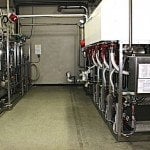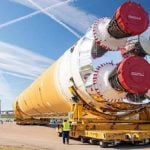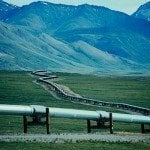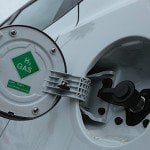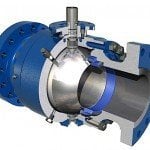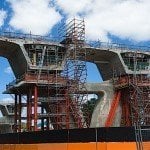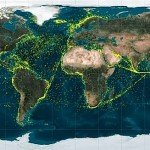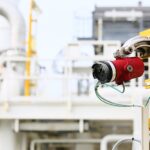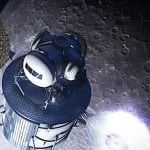Technology for cleaning contaminated water is increasingly being adopted by oil companies and well operators as a pay-by-the-gallon water-cleaning service. OriginOil’s electro water separation (EWS) technology, described as a high-speed, chemical-free way to clean large quantities of water, to be used in water-intensive industries such as oil and gas, and algae farming. EWS has been called the best technology available for removing oil, suspended solids and bacteria from the water used in hydraulic fracking.
Another desscription, from Origin Clear:
“

OriginClear Inc. (OTC/QB: OOIL), a leading provider of water treatment solutions, today announced that it has successfully developed and proven Advanced Oxidation for its breakthrough water cleanup system, Electro Water Separation™, or EWS. University laboratory tests have shown that EWS with Advanced Oxidation (EWS:AOx™) can now extract dissolved contaminants, which are otherwise difficult to remove without chemicals such as chlorine.
“We are now addressing more complex and challenging contaminants, particularly in China,” said Jean-Louis “JL” Kindler, President of OriginClear Technologies. “Adding Advanced Oxidation to our existing process is attractive in these markets. The expected treatment cost in most cases is below US$1 per treated ton of water.”
“For example, in China, we have been asked to clean up the ‘black water’ contaminants coming out of landfills, which can be so thick that they can clog up any filter,” Kindler continued. “We have shown that EWS:AOx can do the job, and I’m happy to report that we are now in the commercial negotiation phase after a successful demonstration.”
Landfills in China and elsewhere generate tens of thousands of tons of leachate daily. This leachate, also known as black water, is a major challenge in wastewater treatment. OriginClear is currently piloting its process for a landfill leachate treatment system in China.
Recent laboratory studies carried out by the Company in partnership with California State University at Bakersfield (CSU Bakersfield) have indicated the effectiveness of EWS:AOx, as measured by Reactive Oxygen Species (ROS) generation. ROS are the strongest oxidants that can be used in water. Their confirmed presence indicates the degree to which the system is able to remove organics from water without chlorine-generated Disinfection Byproducts, which are considered harmful in a waste water treatment system.
“EWS already generates 370mg per second of gas, which is more than twice the amount needed for the removal by electro-flotation of a 2000 mg/l solids contents wastewater stream,” said Dr. Luis Edgar Cabrales Arriaga, assistant professor at the Department of Physics and Engineering at CSU Bakersfield. “Now, we have confirmed that EWS with Advanced Oxidation also produces more than 330 g/m3 of mixed ROS species, such as hydrogen peroxide, for a similar average energy consumption of 1 kWh per m3 of treated water.”
“We are grateful to Professor Cabrales and his team for these results, which demonstrate the system’s ability to remove a broader variety of organic species and a disinfection process that does not involve adding chlorine,” said Nicholas Eckelberry, OriginClear co-founder and inventor.
“EWS removes the oils and suspended organics that tend to clog up wastewater filters. As the first step of the treatment process, EWS:AOx will allow downstream filters and membranes to do their job better,” continued inventor Eckelberry. “Our technology can also treat dissolved organics, such as ammonia, phosphorus and hydrogen sulfide, which are difficult to remove. We’ve found that EWS:AOx delivers twice the functions in one system, for equivalent energy inputs.”
The technology has caught the attention of fracking well operators and their service providers. A company that specializes in disposing of well flowback water said that the industry needs “to move toward treatment and recycling of water versus disposal,” something that EWS allows, with significant cost savings and environmental benefits.
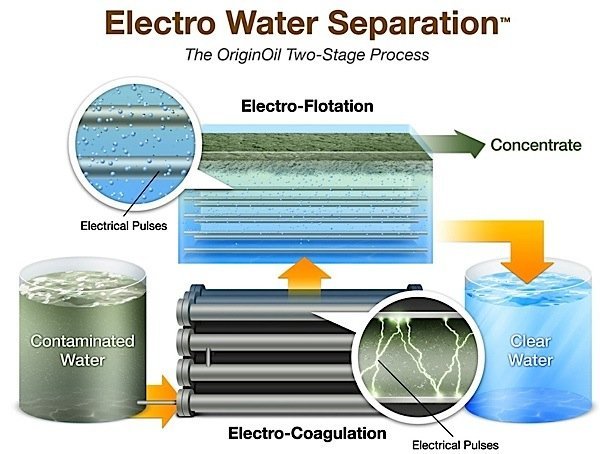
The technology is also being used to clean fish-farming water, and to harvest algae for use as food, feed, biofuels and cosmetics, among other applications. One company using EWS, AlgEternal, said that the system is reliable, efficient, clean and scalable, preferable to alternatives such as centrifugation and filtration.
OriginOil says that its EWS Petro process reclaims water for reuse and minimizes the costs of trucking and disposing of used fracking water.
A prototype EWS liquid waste treatment system has been set up at an office building in France. The EWS system uses human waste produced in the building each day as feedstock. Once cleansed, the nitrate-rich water is used to grow algae on the roof of the building. The algae are then harvested daily and used for generating energy. The inventor of the system said that it is “just as easy” to clean a building’s sewage as it is to treat fish farm water. The system has been handling about 250,000 litres of water per day so far. It is expected that it can be scaled up as needed.
The global fish farming industry has grown to the point where it now rivals beef production. The water used in fish farming must be continually cleaned of ammonia and bacteria and other harmful substances that can attack the fish. The cleaned discharge water, which is rich in nitrogen, could be used to feed algae ponds.
The CTO of the Paris company that is operating the joint venture with OriginOil said in a release, “By utilizing human waste as a feedstock for algae energy, we are showing that urban algae production can meet many essential building requirements—energy generation and waste disposal alike—in a simple closed loop system.”
The EWS system works in two stages. First, contaminated water undergoes an “electro-coagulation” process in which electrical impulses applied to the waste cause it to coagulate. Electro-flotation, the second phase, causes the solid material to float to the surface for harvesting. The company claims that 99 per cent of ammonia and bacteria are removed, and dissolved oxygen levels increased. It is also said to remove 99.9 per cent of oil and 99.5 per cent of suspended solids, with no chemicals used.


